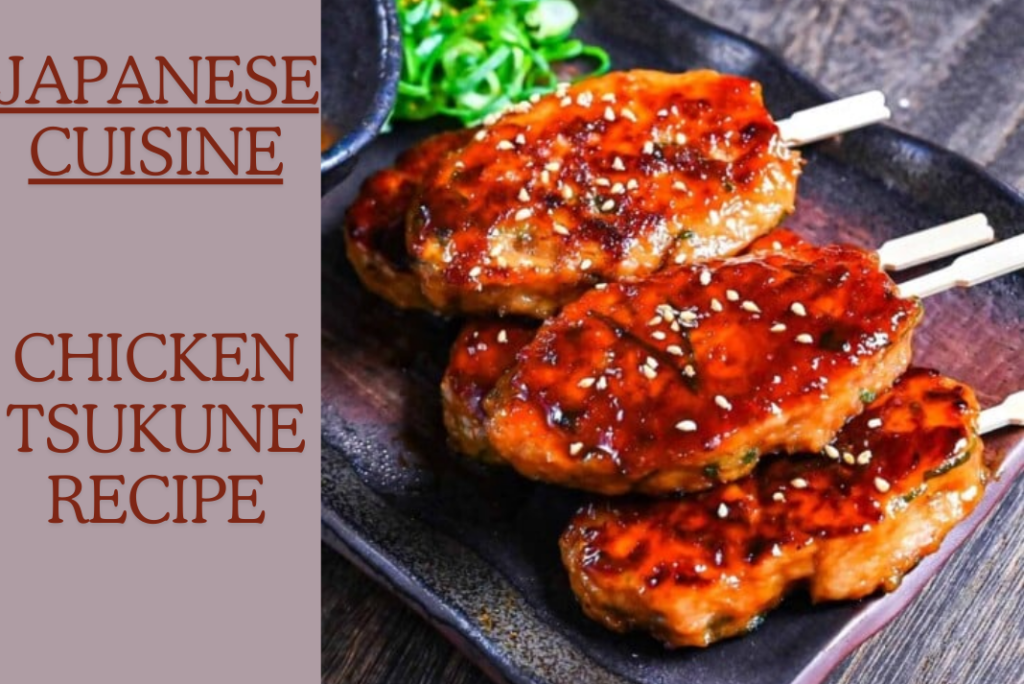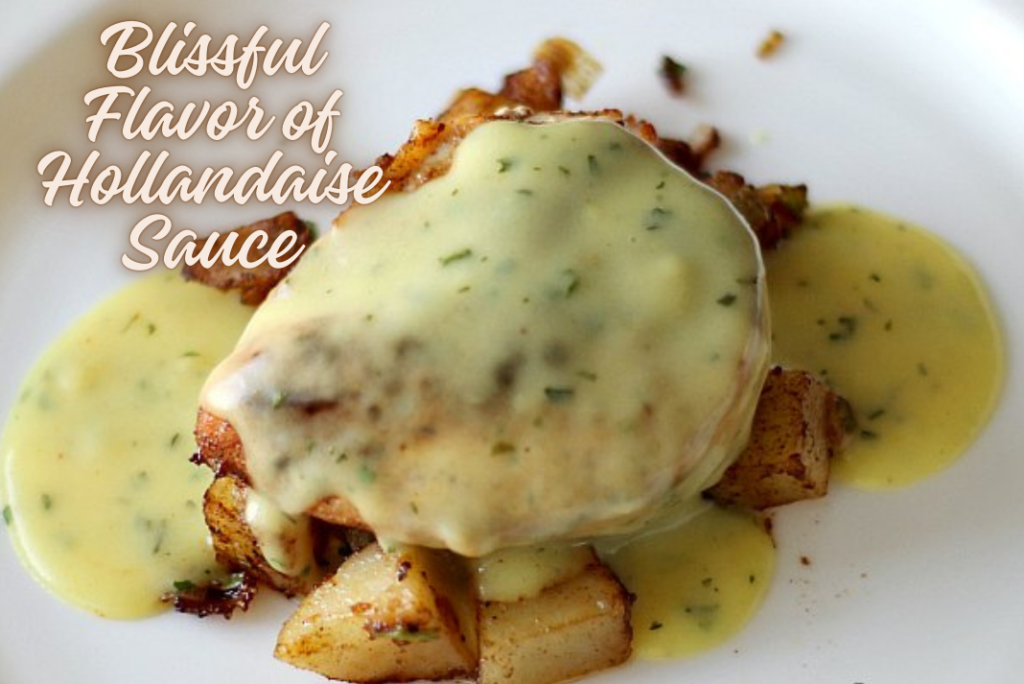Embark on a culinary journey as we unravel the fine art of concocting delectable tsukune recipe right in the comfort of your own kitchen—a clandestine exploration of the intricate world of Japanese gastronomy. Tsukune, a genre of yakitori or flame-kissed chicken skewers, presents an exquisite medley of umami and sweetness, earning it accolades from discerning palates both domestically and across the globe.
In this odyssey through the realm of Japanese culinary traditions, we shall be your guides, unraveling the core ingredients, culinary techniques, and the cultural tapestry that envelops tsukune, enabling you to recreate this palate-pleasing dish within the confines of your own culinary haven. Brace yourself for a culinary metamorphosis and relish the bona fide flavors of Japan with each delectable bite of your very own homemade tsukune.
Table of Contents
Tsukune in Japanese Culture
Tsukune holds a special place in Japanese culture as a popular and cherished dish. Originating from the rich tradition of yakitori, or grilled chicken skewers, tsukune embodies the art of blending savory and sweet flavors. Beyond its culinary appeal, tsukune is often enjoyed in various social settings, from casual street food vendors to upscale dining establishments. This dish reflects the essence of Japanese culinary craftsmanship, emphasizing not only taste but also the cultural significance of communal dining experiences. Tsukune’s widespread popularity showcases how food serves as a cultural bridge, connecting people through shared enjoyment of a flavorful and iconic dish.
Unveiling the Ingredients
•1 cup sake
•1 cup soy sauce
•½ cup mirin (sweet Japanese rice wine)
•½ cup zarame sugar or demerara sugar
Chicken and assembly
•1 lb. skin-on, boneless chicken thighs or 1 lb. ground dark-meat chicken and 2 Tbsp. chicken fat
•½ small onion, finely chopped
•2 tsp. Diamond Crystal or 1¼ tsp. Morton kosher salt
•1¾ tsp. mirin (sweet Japanese rice wine)
•1½ tsp. finely grated yuzu or lemon zest
•1 cup glutinous sweet rice flour
•Shichimi togarashi and lemon wedges (for serving)
Special equipment
•Ten 6″ bamboo skewers, soaked at least 1 hour, or metal skewers
Step-by-Step Tsukune Recipe
1. Preparation: Cleaning and Mincing the Chicken, Gathering Seasonings
- Begin by thoroughly cleaning and patting dry the ground chicken. This ensures a clean canvas for the flavors to meld.
- Mince garlic, ginger, and green onions finely. These aromatic ingredients will infuse the chicken with a rich and savory taste.
- Measure and gather all the seasonings—soy sauce, sake, mirin, sugar, and any other desired spices. Having everything ready streamlines the mixing process.
2. Mixing: Combining Ingredients to Form a Well-Seasoned Mixture
- In a large mixing bowl, combine the ground chicken with the minced aromatics and measured seasonings.
- Use your hands or a spatula to thoroughly mix the ingredients. Ensure an even distribution of flavors throughout the chicken mixture.
- This step is crucial for developing a well-seasoned and cohesive blend, setting the foundation for the distinct taste of tsukune.

3. Shaping: Techniques for Shaping Tsukune Skewers for Optimal Cooking
- With clean hands, take a portion of the seasoned chicken mixture and shape it into an elongated oval or cylindrical form around a skewer.
- Ensure an even thickness to promote uniform cooking. Smoothing the surface of the tsukune will contribute to an appealing texture after cooking.
- Repeat the process until all the mixture is used, creating evenly shaped skewers for optimal grilling, broiling, or pan-frying.
4. Cooking Methods: Exploring Grilling, Broiling, or Pan-Frying Options
- Grilling: Preheat your grill to medium-high heat. Place the tsukune skewers on the grill, turning occasionally until they are cooked through and have a delightful char.
- Broiling: Arrange the skewers on a broiler pan and place them under the broiler. Turn occasionally to achieve an even cook and slight caramelization.
- Pan-Frying: Heat a pan with oil over medium heat. Cook the skewers, turning to brown on all sides until fully cooked.
Following these step-by-step instructions ensures that you master the art of crafting delicious tsukune, from preparation to cooking, and savor the authentic flavors of this Japanese delicacy in the comfort of your own kitchen.
Tips for Perfect Tsukune
Achieving the perfect tsukune requires attention to detail and a few expert tips to elevate your cooking. Here are some tips to ensure your tsukune turns out flavorful and perfectly cooked:
Quality Chicken: Start with high-quality ground chicken, preferably a mix of dark and white meat, to ensure a juicy and well-balanced flavor.
Aromatics Enhancement: Mince the garlic, ginger, and green onions finely to evenly distribute their flavors throughout the chicken mixture, enhancing the overall taste of the tsukune.
Proper Seasoning: Measure and mix the soy sauce, sake, mirin, and sugar accurately. Adjust the seasonings to your taste preference but maintain a balance to achieve the classic sweet and savory profile.
Uniform Shaping: When shaping the tsukune around the skewers, aim for uniform thickness to ensure even cooking. Smoothing the surface of each skewer contributes to a pleasing texture.
Soak Skewers: If using wooden skewers, soak them in water for at least 30 minutes before threading the tsukune. This prevents them from burning during the cooking process.
Preheat Grill or Pan: Whether grilling or pan-frying, ensure your cooking surface is properly preheated. This helps to achieve a sear on the tsukune, locking in juices and flavor.
Oil for Pan-Frying: If pan-frying, use a neutral oil with a high smoke point, such as vegetable or canola oil. Coat the pan evenly to prevent sticking and promote a golden brown exterior.
Basting for Flavor: While grilling or broiling, baste the tsukune with the sauce mixture during the cooking process. This not only enhances flavor but also contributes to a glossy glaze.
Internal Temperature: To ensure the tsukune is fully cooked, check the internal temperature using a meat thermometer. Aim for a safe internal temperature of 165°F (74°C).
Resting Period: Allow the tsukune to rest for a few minutes after cooking. This helps redistribute the juices, resulting in a moist and succulent texture.
By incorporating these tips into your tsukune preparation and cooking process, you’ll be on your way to creating a dish that captures the essence of Japanese culinary finesse—perfectly seasoned, beautifully shaped, and irresistibly delicious.
Exploring Flavor Variations
Experimenting with flavor variations is a delightful way to put your own creative spin on traditional tsukune. Here are some exciting ideas to explore:
Teriyaki Twist: Enhance the sweet and savory profile by brushing the tsukune with a teriyaki glaze during the cooking process. Include ingredients like soy sauce, mirin, sake, sugar, and ginger for an extra layer of flavor.
Spicy Infusion: Add a kick to your tsukune by incorporating spicy elements. Mix in crushed red pepper, Sriracha, or chili paste into the chicken mixture for a spicy twist. You can also create a spicy dipping sauce for added heat.
Citrus Zest: Infuse a burst of freshness by adding citrus zest to the chicken mixture. Grated yuzu, lemon, or orange zest can elevate the flavor profile and provide a vibrant contrast to the savory notes.
Sesame Sensation: Toasted sesame seeds or a drizzle of sesame oil can introduce a nutty undertone to your tsukune. Sprinkle sesame seeds on the skewers before cooking or add a dash of sesame oil to the sauce for a distinctive flavor.
Herbaceous Elegance: Experiment with fresh herbs like cilantro, mint, or basil to bring a herbaceous element to your tsukune. Finely chop the herbs and incorporate them into the chicken mixture for a burst of freshness.
Miso Marvel: Integrate miso paste into the seasoning for a rich and savory flavor profile. The umami depth of miso adds complexity to the tsukune, creating a unique and indulgent experience.
Honey Glazed Delight: Substitute or complement sugar with honey in the seasoning mixture. The natural sweetness of honey adds a luscious glaze to the tsukune, creating a perfect balance of flavors.
Asian Fusion Fusion: Experiment with fusion flavors by incorporating ingredients like lemongrass, coconut milk, or Thai curry paste. This can add an exciting twist to the traditional Japanese dish.
Soy Ginger Elegance: Elevate the classic soy-ginger combination by finely grating fresh ginger into the chicken mixture. This adds a zesty and aromatic quality, enhancing the overall taste.
Wasabi Wonder: For a bold and distinct flavor, mix a small amount of wasabi into the chicken mixture. Be cautious with the quantity to ensure it complements rather than overwhelms the palate.
Feel free to mix and match these ideas, or create your own signature flavor variation. The beauty of tsukune lies in its versatility, allowing you to tailor the flavors to suit your personal taste preferences and culinary creativity.

Serving Suggestions to make your Dish More Interesting
Pairing your homemade tsukune with complementary sides and beverages enhances the overall dining experience. Here are some serving suggestions to elevate your tsukune feast:
Steamed Rice:
Serve tsukune over a bed of steamed rice to soak up the delicious sauce. The combination of the flavorful chicken skewers and fluffy rice is a classic and satisfying pairing.
Crispy Asian Slaw:
A refreshing Asian slaw with shredded cabbage, carrots, and a light sesame dressing adds a crunchy and vibrant element to the meal. The crispiness of the slaw complements the tender tsukune.
Pickled Vegetables:
Pickled cucumbers, radishes, or daikon provide a tangy contrast to the savory tsukune. The acidity from the pickles helps balance the richness of the dish.
Miso Soup:
A bowl of hot miso soup on the side adds warmth and depth to the meal. The umami from the miso complements the flavors of the tsukune, creating a well-rounded dining experience.
Edamame Beans:
Steamed edamame sprinkled with sea salt makes for a simple and nutritious side dish. The poppable texture of edamame is a delightful accompaniment to the grilled chicken skewers.
Japanese Noodles:
Serve tsukune alongside soba or udon noodles for a heartier meal. Toss the noodles in a light soy-based sauce for a cohesive and satisfying pairing.
Sesame Cucumber Salad:
Sliced cucumbers drizzled with a sesame-soy dressing add a cool and crunchy element to the meal. The nuttiness of sesame complements the flavors of the tsukune.
Japanese Potato Salad:
Creamy and tangy Japanese potato salad, with carrots and cucumbers, offers a comforting and cooling side dish that balances the bold flavors of the tsukune.
Dipping Sauces:
Prepare a variety of dipping sauces such as ponzu, soy sauce with a dash of wasabi, or a sweet chili sauce. These sauces enhance the versatility of the dish, allowing diners to customize their tsukune experience.
Green Tea or Sake:
Traditional Japanese green tea or a glass of sake complements the meal, offering a refreshing and authentic beverage pairing. The subtle notes of green tea or the smoothness of sake can enhance the overall dining experience.
Remember to garnish the dish with additional green onions, sesame seeds, or a sprinkle of chopped cilantro for a visually appealing presentation. The key is to create a balanced and diverse spread that enhances the flavors of the tsukune while providing a well-rounded dining experience for you and your guests.
.



